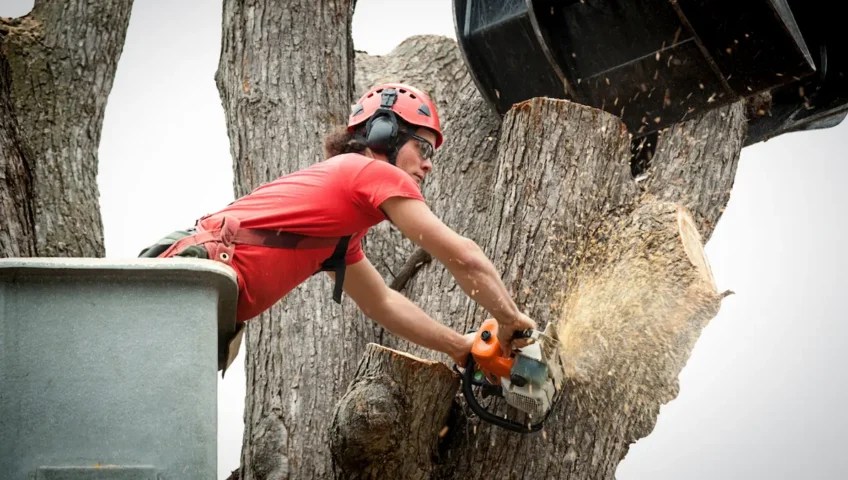Trees enhance your property’s aesthetic appeal, shade, and value, but when a tree falls or poses a safety risk, it’s crucial to know if tree removal is covered by homeowners insurance. Knowing what insurance covers may help Minnetonka and the Twin Cities’ homeowners and property managers save time, money, and aggravation. This article will discuss when insurance covers tree removal, when it doesn’t, and how preventative care might save expensive problems.
When Does Homeowners Insurance Cover Tree Removal?
Tree removal is often covered by homeowners insurance if a tree falls on your property due to a covered risk and damages a structure. A covered risk is an occurrence that is specifically included in your insurance policy, like:
- Storms with strong gusts, hail, and a lot of snow
- Lightning strikes
- Damage from smoke and fire
- Declining things
For instance, your insurance will usually pay for the cost of tree removal and any required repairs if a tree is uprooted during a strong storm and collides with your house or garage. Policies frequently include coverage up to a certain amount, such $500 to $1,000 for each tree removal incident.
When Does Homeowners Insurance Not Cover Tree Removal?
Although insurance often offers financial assistance, there are several circumstances in which tree removal is not covered:
- If a tree falls without causing damage: The majority of insurance companies will not cover the cost of removing a tree that falls in your yard without causing damage if it does not strike a house, fence, or other covered building.
- Preventable issues: If a homeowner fails to remove a tree that is unhealthy, dead, or leaning dangerously, insurance may not pay for any losses that result from the tree falling.
- Earthquakes and floods: Unless extra coverage is acquired, standard homeowners insurance usually does not cover tree damage brought on by earthquakes or floods.
- Tree maintenance: Unless an insured structure is in immediate danger, insurance does not pay for the expense of pruning, trimming, or removing trees that are still standing.
What About Trees That Fall from a Neighbor’s Property?
Homeowners frequently worry about who is responsible when a tree from a nearby yard falls onto their property. Even if your neighbor owns the tree, your insurance coverage will often cover the damage to your property. However, the neighbor’s insurer may be liable if they failed to take care of a tree that was obviously dangerous.
Your neighbor’s insurance should pay for repairs if a tree from your yard falls onto their property and causes damage. Trees close to property borders should be routinely inspected and maintained to prevent conflicts.
The Importance of Preventative Tree Maintenance:
Although unexpected tree damage may be partially covered by homeowners insurance, prevention is usually the best course of action. Frequent tree care lowers the chance of uprooted trees or falling limbs, particularly during Minnesota’s severe winters and summer storms.
The following preventative measures will help safeguard your property:
- Schedule regular tree inspections: A qualified arborist can evaluate your trees’ health and spot possible hazards.
- Prune dead or weak branches: Pruning dead or weak branches helps keep them from turning into hazardous missiles during storms.
- Check for signs of disease or rot: Trees that have fungal diseases or internal decay may be weak structurally and more likely to collapse.
- Remove hazardous trees: You may avoid thousands of dollars in damages and insurance issues by getting rid of a tree that is leaning dangerously or has significant damage before it falls.
Emergency Tree Removal and Insurance Claims:
To ensure a seamless insurance claim procedure in the event of storm damage or an unforeseen tree issue, take these steps:
- Document the damage: Capture crisp images and videos of the downed tree, any impacted buildings, and any associated property damage.
- Contact your insurance provider: Find out if your policy covers tree removal and repairs and report the occurrence as soon as possible.
- Hire a licensed and insured tree removal service: A lot of insurance companies need documentation showing the tree removal was done by experts.
- Keep receipts: Cover exposed areas with tarps until repairs are finished if a tree has damaged your siding or penetrated your roof.
Get Expert Tree Care Today:
Don’t wait until a fallen tree causes expensive damage. Contact Dynasty Tree Experts right now for a free consultation. Our staff is prepared to assist you in safeguarding your house and landscaping, whether you require urgent removal or preventative maintenance.

